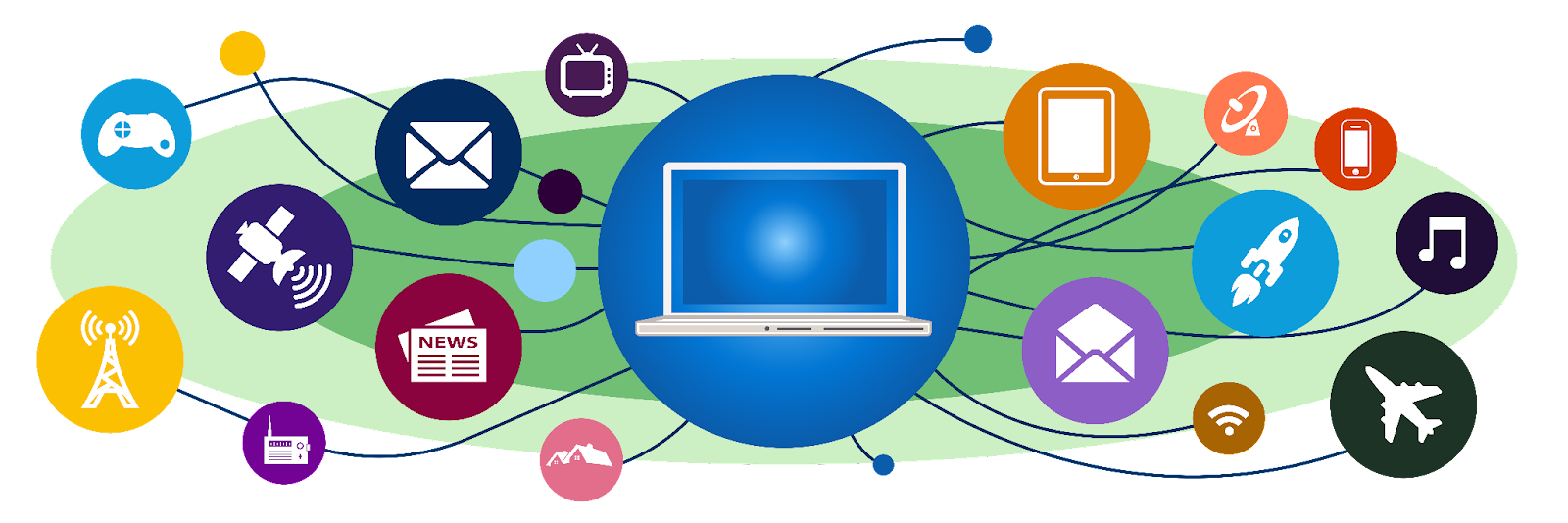Get to Know the Emerging Cybersecurity Landscape
Learning Objectives
After completing this unit, you’ll be able to:
- Describe the opportunities and threats associated with emerging technologies.
- Explain the role of effective communication in cybersecurity decision-making.
Emerging Technologies
Natural disasters can have devastating impacts on our society, but they only become disasters when we’re unprepared or unable to respond and recover from them. Over time, with technological developments, we’ve become better equipped to prepare for and respond to natural disasters. We’ve managed to reduce risk by using early warning systems, managing population density, and planning infrastructure.
Society is adapting to the challenges of a changing climate and developing new technologies and strategies to mitigate the risks associated with natural disasters. Likewise, businesses are adapting to the challenges of an increasingly digital world and investing in emerging technologies and cybersecurity solutions to reduce their vulnerability to cyberattacks.

New inventions have significantly impacted our daily lives in recent years. We can now stream videos from anywhere at any time, experience safer driving with semi-autonomous vehicles, transfer digital assets, and use voice recognition to transcribe notes, send messages, and dial phone numbers while on the go. These and other global innovations are made possible by several new technologies.
-
Blockchain: Blockchain is a distributed ledger technology that has revolutionized the way we store, manage, and exchange data and assets in industries like finance, real estate, and supply chain management.
-
Fifth generation (5G): 5G technology delivers communication networks that are lightning-fast and ultra-efficient with measurable positive impact in healthcare, manufacturing, transportation, and entertainment. However, there are growing concerns about privacy and security.
-
Internet of Things (IoT): IoT devices like smart thermostats, security systems and smart watches have brought many benefits to daily life by connecting everyday objects to the internet and enabling them to exchange data and information. However, an overly large attack surface, insufficient privacy protection, and lack of encryption make IoT devices a major cause for concern in the security realm.
The power and conveniences of these technologies come with opportunities and threats. And while the future of technology is emerging and expanding, the future of cybersecurity is also beginning to take shape.
The Communication Gap
As technology becomes increasingly sophisticated, cybersecurity conversations are expanding beyond the IT Department and into the C- Suite and boardroom. Security leaders, business leaders, and board members are engaged in more frequent meetings, knowledge exchange, and data dissemination.
Even regulatory bodies, like the US Securities and Exchange Commission (SEC), are placing more emphasis on cybersecurity and governance. In March 2022, the SEC issued a proposed rule titled Cybersecurity Risk Management, Strategy, Governance, and Incident Disclosure that, among other things, requires public companies to reveal if their boards include experts in cybersecurity. With cybersecurity experts on the board, board members are now taking on a critical role to help ensure organizations remain secure from digital threats.
Nevertheless, while information sharing has increased, effective communication is critically low. To demonstrate ineffective communication, let’s review a common scenario between three company executives: Jordan, the CEO; Avery, the chief information security officer (CISO); and Taylor, a board member. Jordan convened a meeting to discuss a recent cybersecurity incident.

Jordan acknowledged everyone in the room with a greeting and proceeded to initiate the meeting with a question, “Do we really need to spend more money to resolve this issue? Can't we utilize our existing tools to fix the problem?”
As the person responsible for overseeing cybersecurity, Avery had been attempting to explain for weeks why additional funding is needed. “Excuse me,” Avery began slowly, “In addition to results of past penetration tests and phishing exercises, this exploit is more evidence that there are critical network vulnerabilities in our systems that need addressing before they cause more damage.”
Representing the Board, Taylor leaned forward and fixed Avery with an intense gaze. "I’m not sure what any of that means. Can you just explain what we will gain from spending more money on this issue?"
Avery gestured toward a colorful dashboard on a laptop screen and explained, “If these vulnerabilities aren’t addressed quickly, then we could face potential DDOS, XEM, SQL, and other forms of attack from malicious actors looking to exploit our system. These attacks will not only cost us money and time spent dealing with them but also lead to reputational damage if word gets out about what happened here.”
Taylor and Jordan appeared unconvinced about the need for additional investment in cybersecurity as Avery continued to describe potential future calamities for the company.
This scenario highlights the challenges that can arise when technical language and complex data obscure straightforward discussions about cybersecurity and its implications for business strategy and daily operations. When there is a lack of mutual understanding between security leaders and executives, important security risks may be overlooked, and the organization may be vulnerable to cybersecurity threats.
Effective Communication
Let’s look at ways that cybersecurity leaders can effectively communicate to increase decision makers’ understanding and ability to act.
- Instead of focusing on technical details such as vulnerability metrics or incident response time, shift the discussion to focus on how cybersecurity measures can protect key business operations.
- Highlight real-world events and explain how they can impact cybersecurity, and describe the specific measures being taken to address them.
- Use business metrics and presentations that tell a compelling and relatable story to engage and resonate with the audience.
Effective communication is essential to ensure that cybersecurity measures are properly understood and integrated into the organization’s overall risk management strategy. It’s also crucial in the emerging future of cybersecurity as it helps to build trust and collaboration and promotes a culture of cybersecurity awareness and vigilance.
Knowledge Check
Ready to review what you’ve learned? The knowledge check below isn’t scored—it’s just an easy way to quiz yourself. To get started, drag the description in the left column next to the matching category on the right. When you finish matching all the items, click Submit to check your work. To start over, click Reset.
Great work! Now that we’ve covered emerging technologies, and the critical role of effective communication in decision-making, let’s explore cybersecurity compliance and the importance of managing regulatory risk.
Resources
-
Trailhead: Cyber Resilience Program Development
-
External Site: Harvard Business Review: Is Your Board Prepared for New Cybersecurity Regulations?
-
External Site: Tanium: How CISOs Can Talk Cyber Risk So That CEOs Actually Listen
